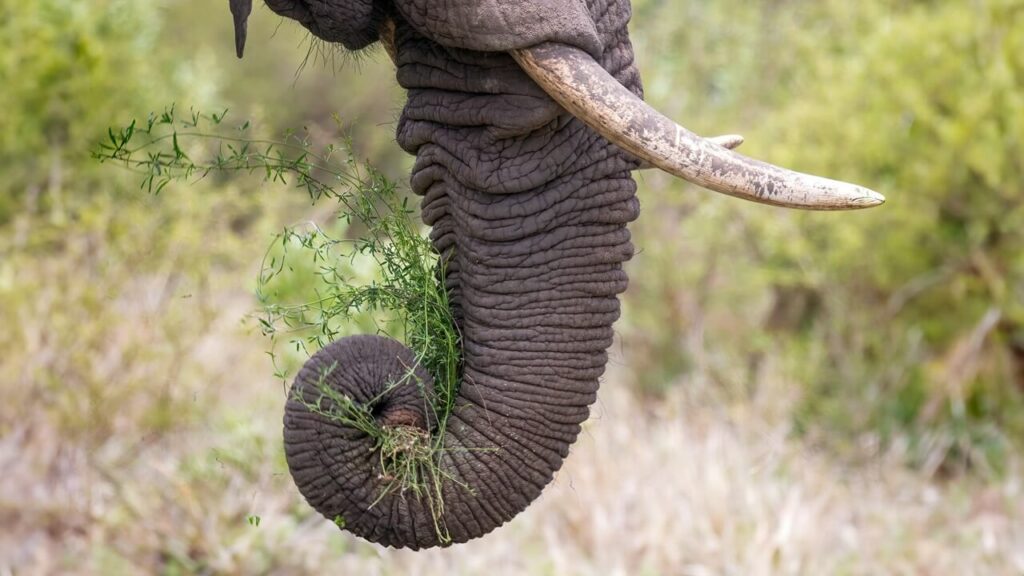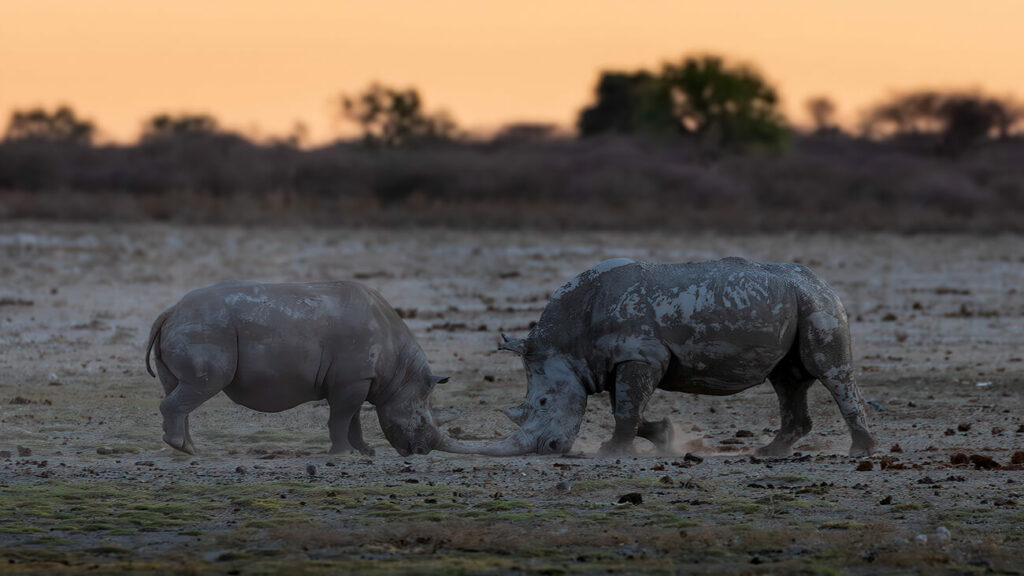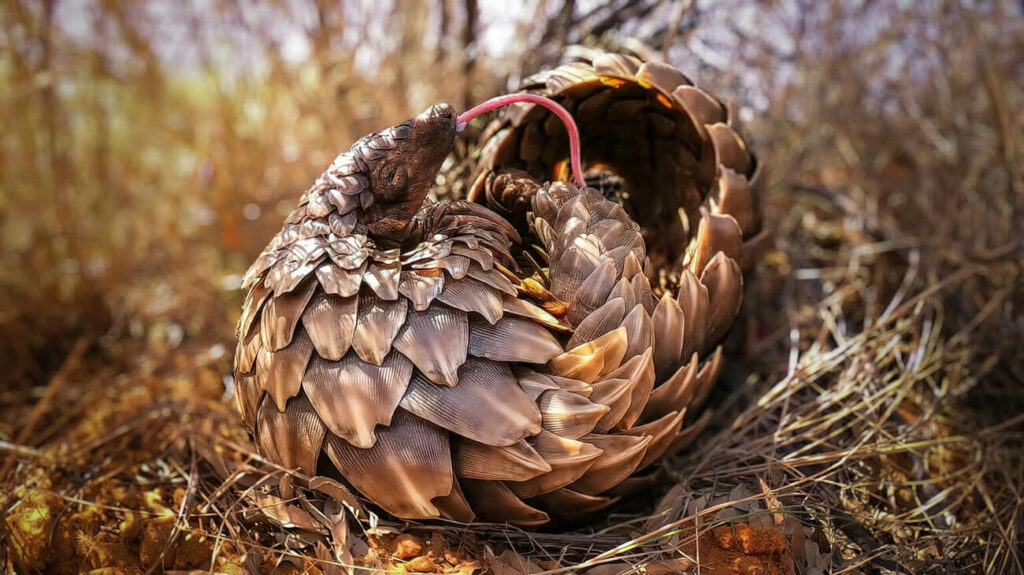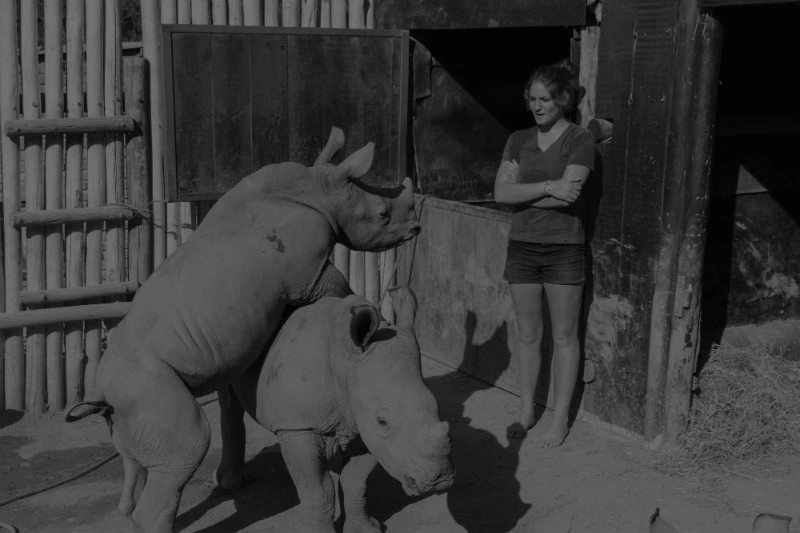Gemsbuck: The Secrets of Desert Survival
Unveiling the Gemsbuck’s Resilience
Gemsbuck (Oryx Gazella), commonly referred to as Gemsbok and sometimes called the South African oryx, are magnificent antelopes that embody the spirit of the Kalahari Desert. They are instantly recognizable by their striking black and white facial markings, long spear-like horns, and muscular build. Let us dive into the fascinating world of these desert warriors.
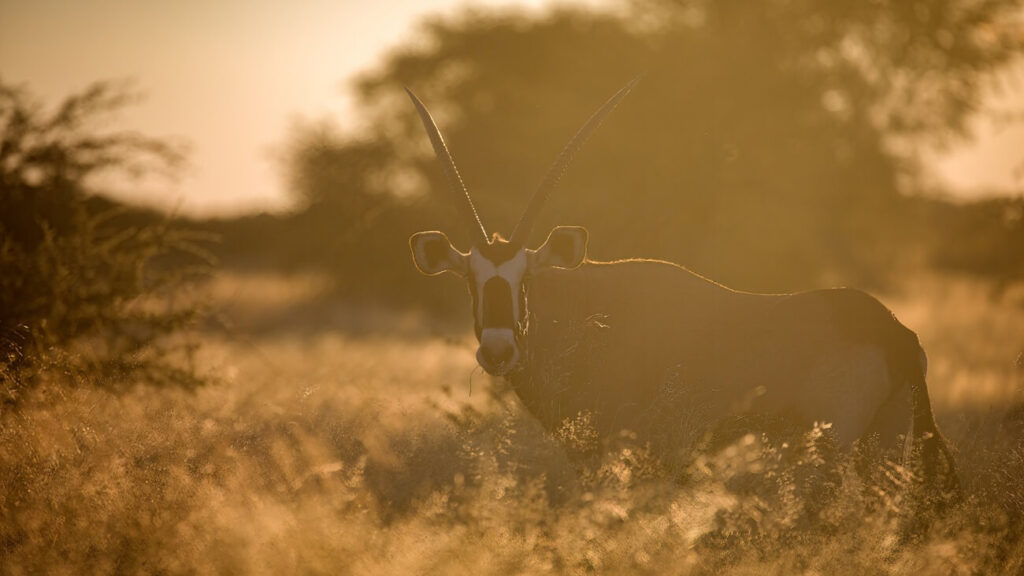
Gemsbok at golden hour – Khamab Kalahari Reserve
Gemsbuck Taxonomy and Evolution
Gemsbok belong to the genus Oryx, which includes several other arid-adapted antelope species. They are closely related to the Arabian oryx and the East African oryx. Gemsbuck fossils suggest they evolved in East Africa and eventually spread into Southern Africa, adapting to thrive in its harsh environments.
Built for Survival: Physical Description
- Size: Gemsbok are large antelopes, with males standing up to 1.2 meters (4 feet) at the shoulder. They typically weigh between 180-240 kilograms (400-530 pounds). Adult females are slightly smaller.
- Horns: Both sexes boast impressive, straight horns that can reach an astonishing 85-120 centimeters (33-47 inches) in length. As with most Kalahari antelope, the females have longer yet thinner horns than the males.
- Coloration: Their coats are mostly light tan with contrasting black markings on the face, legs, and underbelly. This coloration helps them camouflage and regulate body temperature in the desert.
Desert Adaptations and Abilities
- Thriving in Heat: Gemsbok have evolved incredible adaptations to survive in the harsh desert heat. A unique network of blood vessels called the rete mirabile in their heads functions as a “brain cooling” system. This allows them to raise their body temperature to avoid water loss through perspiration, while keeping their brains comfortably cool under the scorching sun.
- Water Conservation: They can survive for extended periods without drinking, obtaining moisture from the plants they eat and metabolic processes.
- Powerful Runners: When threatened, gemsbok can reach speeds of up to 60 kph (37 mph), easily outpacing most predators.
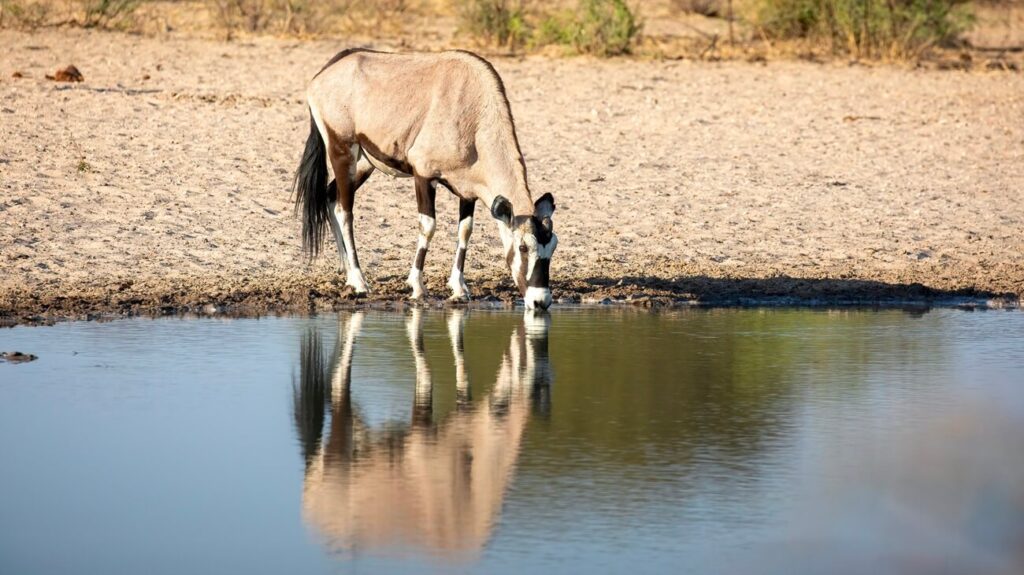
A Gemsbok (both horns broken) seen drinking. While water independent, they do drink when water is available
Gemsbuck: Masters of Survival – Behavior
Beyond their physical prowess, gemsbuck exhibit fascinating social behaviors that enhance their desert survival.
- Herd Dynamics: Gemsbok herds are typically female-dominated, with a social hierarchy led by an older, experienced female. Males form bachelor groups until they’re mature enough to challenge the dominant male for breeding rights.
- Communication: Gemsbok utilize a complex system of vocalizations and body language to communicate with each other. Snorts, bleats, and bellows alert others to danger or potential mating opportunities.
- Cooperative Defense: When threatened by predators, gemsbok might form a defensive circle with females and young calves in the center. Males use their sharp horns to ward off attackers. This teamwork is crucial against larger predators like lions.
Social Lives and Ecology
Gemsbuck exhibit a complex social structure with three distinct types of groups:
- Mixed Herds: These are the most common groupings, typically numbering a dozen individuals but can swell to hundreds during the rainy season. Led by a dominant female, with a dominant breeding male maintaining a superior status, these herds are nomadic. Hierarchy is based on age and time spent in the herd.
- Nursery Herds: These consist of females and their young, providing protection and a collaborative environment for raising calves.
- Solitary Males: Mature males may live alone, either as non-breeding individuals or as territorial males defending a specific area.
Territorial Behavior
Dominant males mark their territory with dung piles placed near noticeable landmarks. They adopt specific postures to assert dominance, including an erect stance with horns pointed at rivals and head nodding. Subordinate males typically respond with a head-low posture.
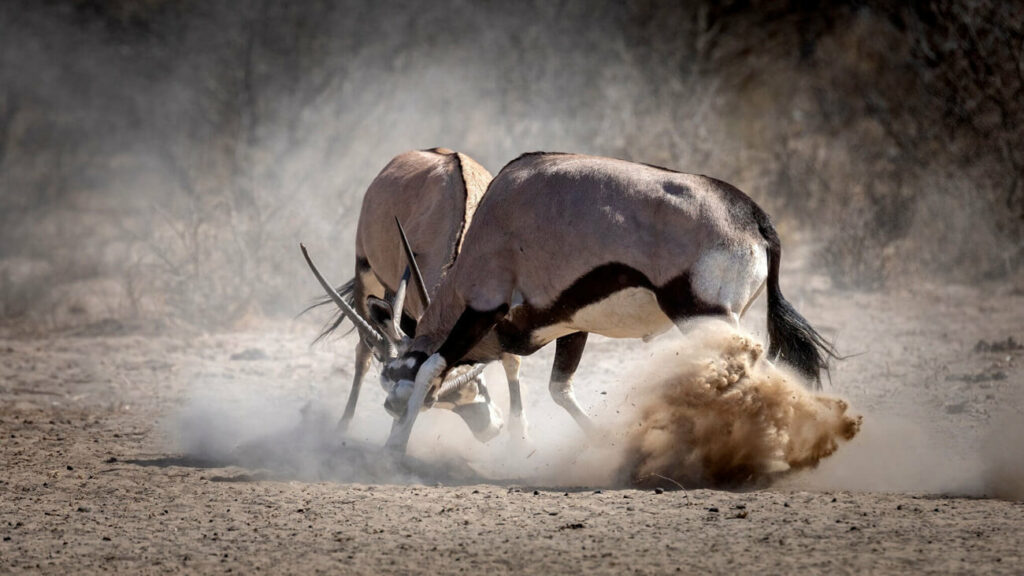
Two adult oryx bulls fighting for dominance
Fighting and Disputes
While intense, fights between gemsbok are relatively rare. They typically occur between dominant males vying for females or access to resources like waterholes. Fights involve clashing horns in head-to-head battles and attempts to stab or strike opponents. Despite the danger posed by their horns, fatalities are uncommon.
Relationship with Other Males
Territorial males attempt to keep mixed and nursery herds within their territory and tolerate other males as long as they display submissive behavior. Non-territorial males generally avoid confrontations with dominant males.
Reproduction and Growth
Gemsbuck breed year-round, with a gestation period of about 9 months. Females give birth to a single calf, which they hide in vegetation for the first few (six) weeks. Calves are weaned at 3.5 months and become independent around 4.5 months old.
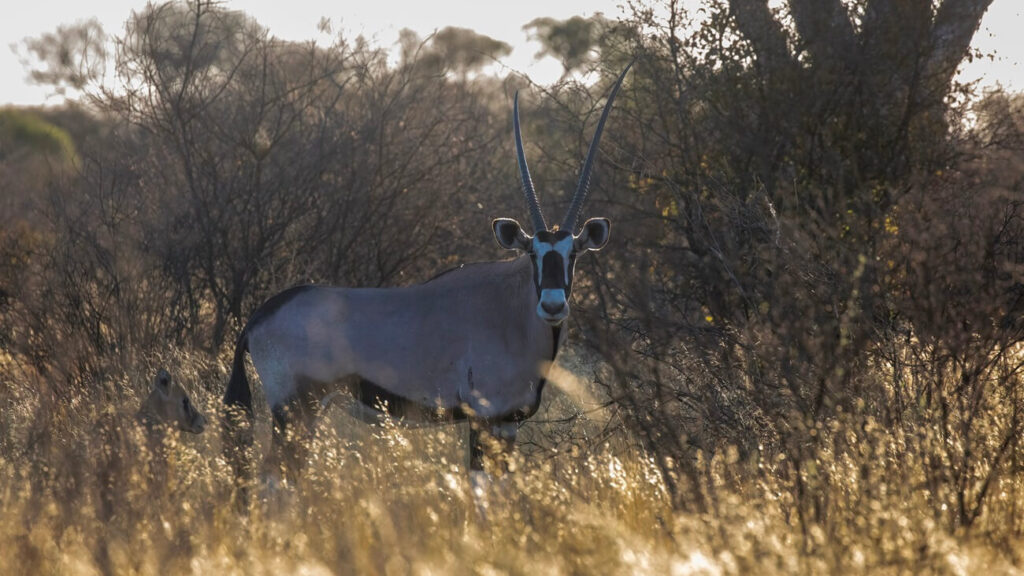
A young calf remains hidden behind an adult female in a nursery herd
Gemsbuck on the Map: Historical and Current Distribution
Historically, gemsbuck had a vast range across Southern Africa’s arid and semi-arid regions. Their presence stretched from southern Angola and western Zambia all the way south to the Cape Province in South Africa.
However, habitat loss due to agriculture, livestock farming, and competition for resources have significantly reduced their historical range. Today, gemsbuck populations are primarily found in protected areas like:
- Kgalagadi National Park (South Africa)
- Khamab Kalahari Reserve (South Africa)
- Etosha National Park (Namibia)
- Central Kalahari Game Reserve (Botswana)
- Hwange National Park (Zimbabwe)
Threats to the Gemsbuck’s Future
Historically, gemsbuck roamed across much of Southern Africa’s arid regions. Today, they are mostly found in protected areas within Botswana, Namibia, South Africa, and Zimbabwe. Their primary threat is habitat loss.
While gemsbuck are considered “Least Concern” by the IUCN, several threats require ongoing monitoring and conservation efforts:
- Habitat Loss and Degradation: Conversion of land for agriculture and livestock grazing can fragment and shrink suitable habitat for gemsbuck populations.
- Competition with Livestock: In some areas, farmers are turning from extensive livestock farming models to more intensive livestock farming as the demand for hunting decreases. Competition for water and grazing resources from livestock can put pressure on gemsbuck herds as decrease in value.
- Fencing: Fences erected for reserves and livestock management can disrupt traditional migration routes and limit access to crucial resources. Over time, fenced populations further lack the natural genetic diversity associated with free-roaming wildlife.
Conservation and Monitoring
Conservation efforts focus on habitat protection, sustainable land management, and community engagement. Research projects track gemsbuck movements, population dynamics, and social behavior to inform conservation strategies.
The Importance of Monitoring Gemsbuck Populations
Monitoring gemsbuck populations is critical for their long-term conservation. Here’s how:
- Tracking Population Trends: Regular game surveys and monitoring help assess population size, structure, and health. This data allows conservationists to identify potential threats and take necessary actions.
- Understanding Habitat Use: By tracking gemsbuck movements and resource utilization through a combination of the abovementioned surveys and camera traps, researchers can identify important areas for conservation and ensure adequate protected habitat.
- Informing Management Decisions: The data collected through monitoring informs effective management strategies for protected areas, ensuring the long-term survival of gemsbuck and other desert wildlife.
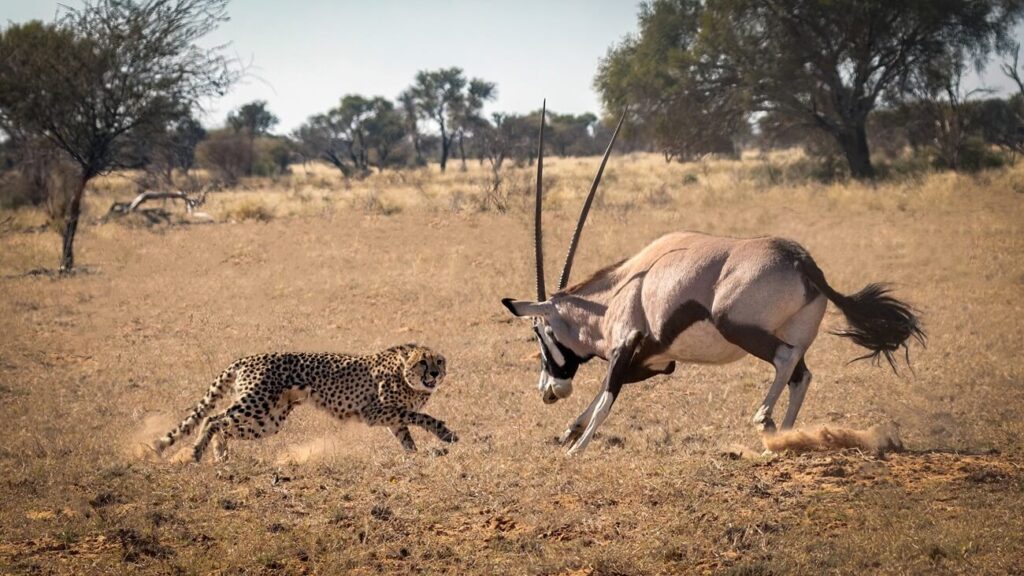
Cheetah and Oryx standoff seen during Cheetah Monitoring
Gemsbuck Conservation Efforts at Khamab Kalahari Reserve
Khamab Kalahari Reserve is deeply committed to gemsbuck conservation as they are an iconic Kalahari species, they form a vital part of the Kalahari ecosystem, and their well-being directly impacts the entire food chain.
However, we have observed a concerning trend – a noticeable decline in gemsbuck numbers (approximately 50%) within the reserve. Through intensive African wild dog monitoring program, a surprising factor potentially contributing to this decline has emerged: predation by African wild dogs.
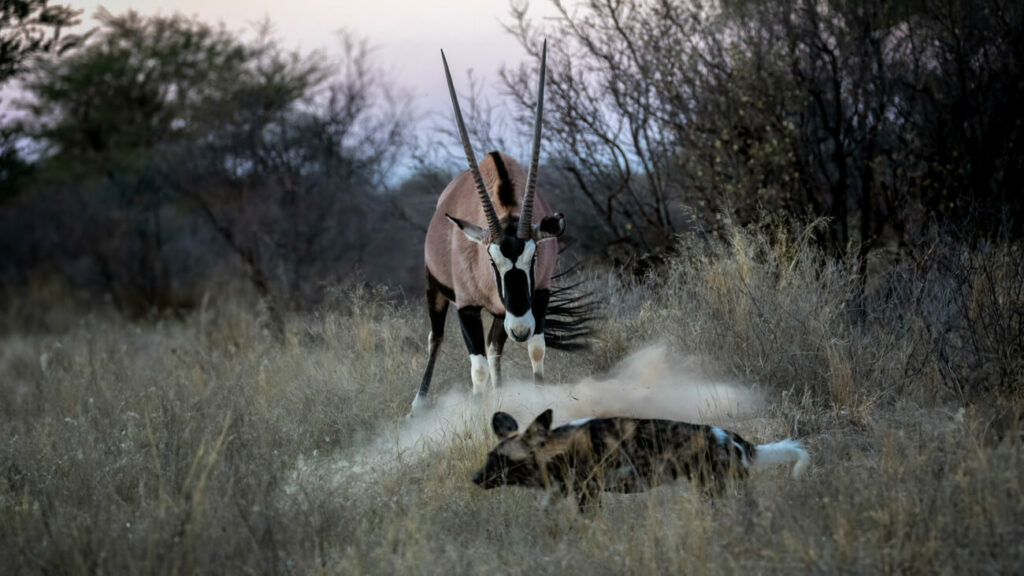
Gemsbok bull standing its ground against an African Wild Dog
The Gemsbuck Paradox: A Surprisingly Preferred Prey
Given the size difference – with gemsbuck being much larger and possessing formidable horns – it would seem unlikely that African wild dogs, weighing only 25-30 kg, would target them as primary prey. Gemsbuck are known for their fierce defense mechanisms, making them a challenging quarry.
Here is where the fascinating aspect of African wild dog behavior comes in. These canines are not only skilled hunters, but also remarkably adaptable. They seem to have developed successful hunting strategies for gemsbuck, and even exhibit a preference for them. Our observations show them bypassing other suitable prey species in favor of pursuing gemsbuck. This highlights the importance of effective predator monitoring.
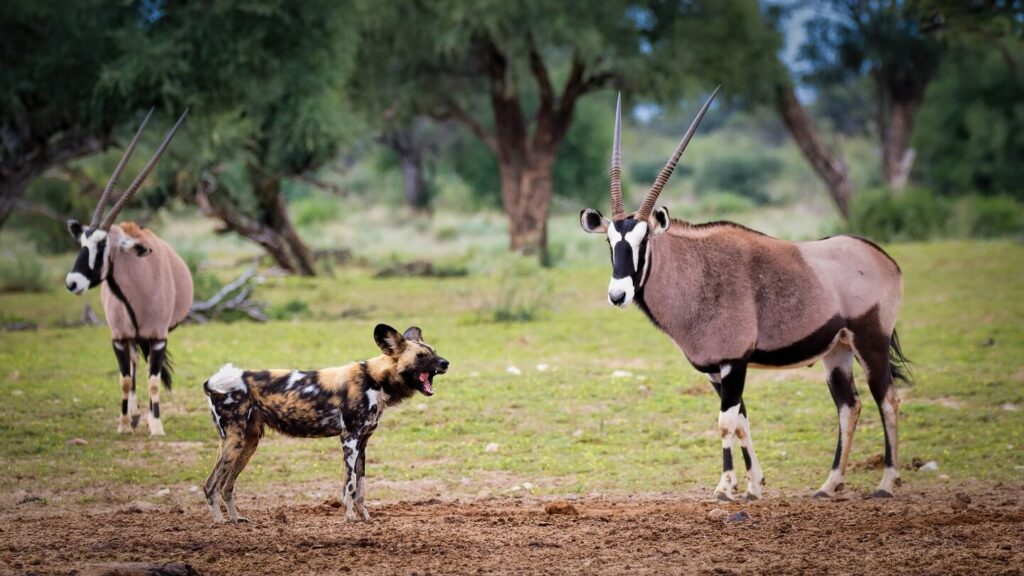
African Wild Dog and Gemsbok standing side-by-side
Understanding the Dynamics: A Delicate Balance
The African wild dog is an endangered species itself, and their presence within the reserve is crucial for maintaining a healthy ecosystem. However, their preference for gemsbuck highlights the delicate balance within the Kalahari food chain.
Ongoing Research and Conservation Solutions
We are actively researching this dynamic to understand the hunting strategies employed by African wild dogs and their impact on the gemsbuck population. This data will be crucial for informing future conservation efforts within the reserve.
Your Role in Citizen Science and Conservation
You can play a vital role in gemsbuck conservation! Responsible tourism, including participating in our conservation safari, directly contributing to research funding and habitat protection initiatives. You’ll participate in data collection activities alongside our team, helping us gather valuable information on both gemsbuck and African wild dogs. This data is essential for developing sustainable management strategies that ensure the long-term survival of all these magnificent creatures.
Together, we can ensure a thriving future for gemsbuck and the entire Kalahari ecosystem.
Want to witness these desert icons in their natural habitat? Join a Conservation Safari and contribute to ongoing gemsbuck research!
FAQs About Gemsbuck
Want to see Gemsbok for yourself? Join Our Working with Wildlife unique Kalahari Safari Project to help African Wildlife, Contact Us for any other questions, or read our Testimonials page to hear what previous guests say!
